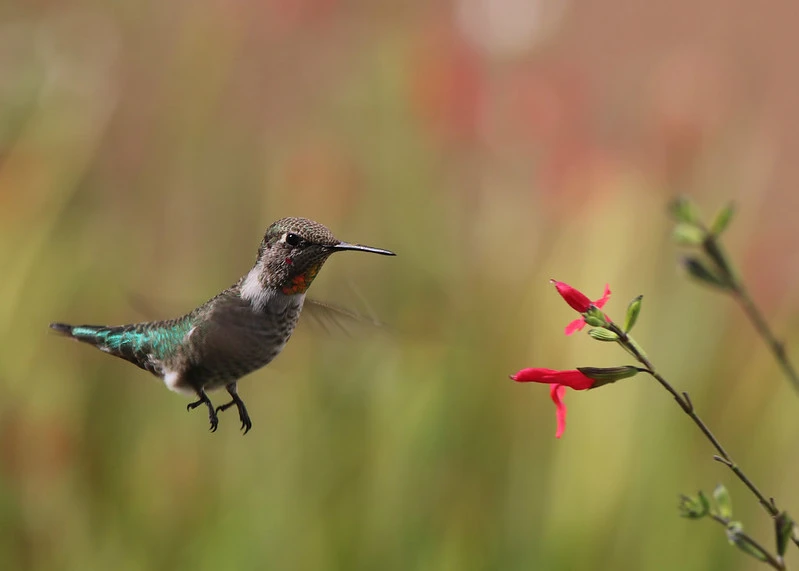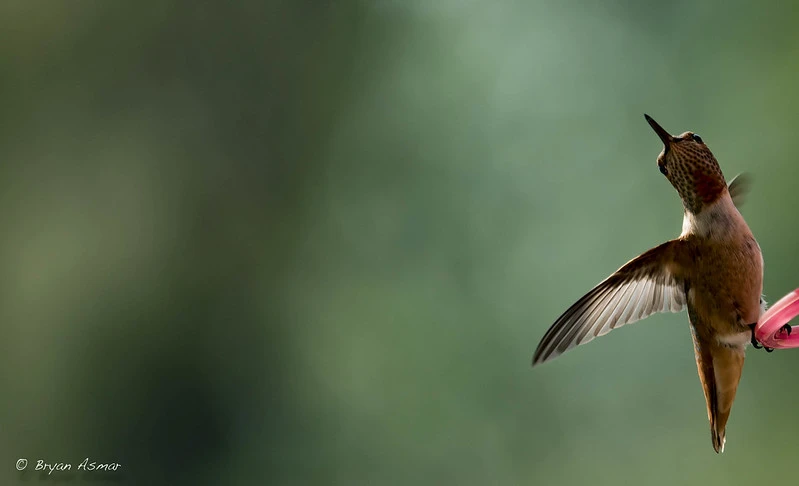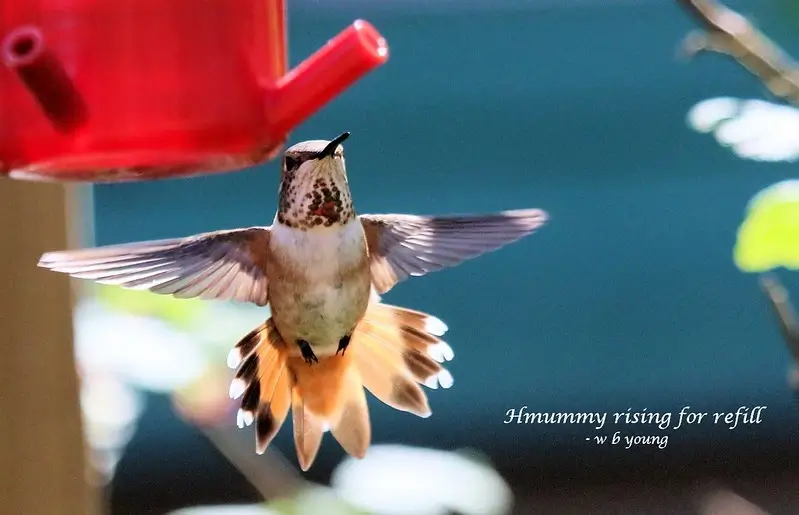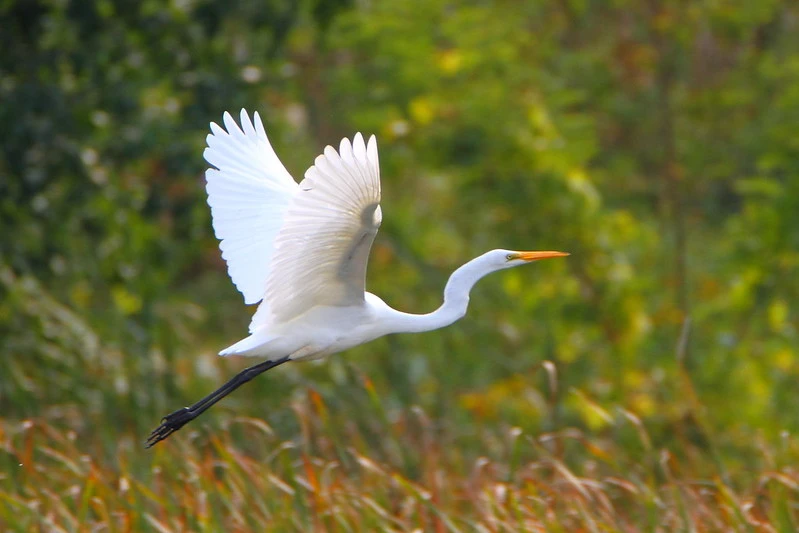Uncover avian wonders! Explore the question, “What bird can fly backwards?” Discover the unique bird species defying flight norms with intriguing capabilities.
Have you ever wondered what bird can fly backward? If you have, you are not alone. Many people are fascinated by the amazing flying abilities of hummingbirds, the only birds that can fly backward with ease. In this article, we will explore how hummingbirds can fly backward, why they evolved this ability, and what other birds can fly backward. We will also answer some frequently asked questions about hummingbirds and their backward flight.
If you are interested in learning more about these incredible creatures, read on and discover the amazing world of hummingbirds and other backward-flying birds.
How Hummingbirds Fly

Hummingbirds have a unique wing shape and muscle structure that allow them to fly in any direction. Unlike most birds, hummingbirds can rotate their wings at the shoulder, elbow, and wrist joints, giving them a full range of motion. Their wings are also very thin and flexible, allowing them to bend and twist as they flap. Hummingbirds flap their wings very fast, up to 80 times per second, creating a figure-eight pattern that generates lift and thrust on both the upstroke and the downstroke. This means that hummingbirds can change their direction and speed instantly, as well as hover in place by balancing the forces of gravity and air resistance.
Why Hummingbirds Fly Backwards

Hummingbirds fly backwards for several reasons, mainly related to their feeding, escaping, and mating strategies. Hummingbirds feed on nectar from flowers, which they can reach with their long and slender bills and tongues. However, not all flowers are easy to access, and some may have obstacles or competitors around them. Hummingbirds can fly backwards to avoid hitting the flower or other birds, as well as to adjust their position and angle to get the best nectar flow. Hummingbirds can also fly backwards to escape from predators or rivals, such as hawks, bees, or other hummingbirds. By flying backwards, hummingbirds can create distance and confusion, as well as maneuver around obstacles or attacks. Hummingbirds can also fly backwards to impress their mates, as part of their elaborate courtship displays. Male hummingbirds can fly backwards in a U-shaped or J-shaped pattern, showing off their speed, agility, and colorful plumage to the females.
How Hummingbirds Evolved to Fly Backwards

Hummingbirds are the result of millions of years of evolution and adaptation to their environment and lifestyle. Hummingbirds belong to the order Apodiformes, which means “without feet”, referring to their small and weak legs that are used only for perching and not for walking or hopping. Hummingbirds are also part of the family Trochilidae, which means “spinning top”, referring to their rapid and agile flight. Hummingbirds are thought to have evolved from small insect-eating birds that lived in the forests of South America, about 22 million years ago. These ancestral birds developed a taste for nectar, which was abundant and nutritious, and gradually adapted their bills, tongues, and wings to better access and extract it. Hummingbirds also developed a high metabolism, a fast heartbeat, and a large brain to support their energy-intensive and complex flight. Hummingbirds diversified into many different species, each with its size, shape, color, and behavior, to occupy different niches and habitats. Today, there are about 340 species of hummingbirds, ranging from the 2-inch-long bee hummingbird to the 8.5-inch-long giant hummingbird, and from the green and brown hermit hummingbird to the rainbow-colored splendid sunbeam.
Other Birds That Can Fly Backwards

Hummingbirds are the only birds that can fly backwards for a long distance and with full control, but some other birds can fly backwards for a short distance or with the help of external forces, such as wind or gravity. Here are some examples of other birds that can fly backwards:
Herons and Egrets: These large wading birds can fly backwards as a defensive strategy against predators or rivals. They can use their long and sharp bills to stab or peck at their enemies while flying backwards to avoid being bitten or grabbed.
Warblers and Flycatchers: These small songbirds can fly backwards to catch insects or avoid obstacles in their habitat. They can use their quick and agile flight to chase or evade their prey, as well as to maneuver around branches or leaves.
European Starlings and Pied-billed Grebes: These birds can fly backwards in a coordinated and synchronized manner as part of their social and mating behavior. They can form large flocks or pairs and perform complex aerial displays, such as flying backwards in circles or spirals, to communicate or attract each other.
What Bird Can Fly Backwards? (FAQs)
Here are some of the most frequently asked questions about birds that can fly backwards:
How fast can hummingbirds fly backwards?
Hummingbirds can fly backwards at a speed of up to 15 miles per hour, which is about the same as their forward speed.
How long can hummingbirds fly backwards?
Hummingbirds can fly backwards for as long as they want or need, as long as they have enough energy and stamina. Hummingbirds can fly for up to 20 hours without stopping, covering distances of up to 500 miles.
How do hummingbirds fly upside down?
Hummingbirds can fly upside down by rotating their wings 180 degrees, reversing the direction of the lift and thrust forces. Hummingbirds can fly upside down for a few seconds, as a way of escaping or confusing predators or rivals.
What are the smallest and largest hummingbirds?
The smallest hummingbird is the bee hummingbird, which measures only 2 inches in length and weighs less than 2 grams. The largest hummingbird is the giant hummingbird, which measures up to 8.5 inches in length and weighs up to 24 grams.
How many hummingbird species are there?
There are about 340 species of hummingbirds, divided into 112 genera. Humming
Conclusion
Hummingbirds are the only birds that can fly backwards, as well as in any other direction, thanks to their unique wing shape and muscle structure. They use this skill to feed, escape, and mate, as well as to show off their beauty and intelligence. Hummingbirds are the result of millions of years of evolution and adaptation to their environment and lifestyle. They are the most diverse and colorful group of birds, with hundreds of different species and varieties. Hummingbirds are truly amazing and fascinating creatures, and we can learn a lot from them.
